Andrew Frost shares his playlist of essential drone music – but first, what’s that sound?
Like minimalist art, drone music makes the most of a limited palette yet it aspires to the infinite. From the work of pioneers such as La Monte Young, Terry Riley and Pauline Oliveros, drone has attached itself to rock, electronic music and techno. Defined by Wikipedia as “a minimalist musical style that emphasizes the use of sustained or repeated sounds, notes, or tone-clusters – called drones” – drone is something for everyone since it has almost nothing.
1. Symphony Monotone – Yves Klein [1947-48]
Where do we begin a list of drone music? Although closely linked to 1960s minimalism one of the great early examples of composed drones comes not from a musician but from an artist – Yves Klein. “I created, around 1947–1948, a “monotone” symphony whose theme expresses what I wished my life to be,” wrote Klein . This symphony of forty minutes duration (although that is of no importance, as one will see) consisted of one unique continuous “sound,” drawn out and deprived of its beginning and of its end, creating a feeling of vertigo and of aspiration outside of time. Thus, even in its presence, this symphony does not exist. It exists outside of the phenomenology of time because it is neither born nor will it die. However, in the world of our possibilities of conscious perception, it is silence – audible presence.”
2. 1-31 VII 69 10:26-10:49 PM from The Black Album – La Monte Young [1969]
Although often considered the godfather-progenitor of Western minimalist music, La Monte Young’s work is hard to track down through legitimate sources, but it’s well worth the effort. The single track on side one of The Black Album is a section from Map of 49’s Dream, performed by Young on sinewave drone and voice, with vocal accompaniment by Marion Zazeela. Like a slowly unfolding raga, the vibe of the track is late 60s hippie experimentalism mixed with trippy off-world adventure. As Edward Pouncey wrote in The Wire, “…if you follow Young’s recommendation to turn it up and play it slow, the resulting low, thrilling drone is at once spiritual and slightly threatening, as though dark forces are being summoned to the surface.”
3. Poppy Nogood and the Phantom Band from A Rainbow in Curved Air – Terry Riley [1971]
Terry Riley was a contemporary and classmate of Young’s at UC Berkeley the mid 1950s and, like Young, began exploring repetition in composition, at first using tape recorders and loops, later composing written scores for orchestra such as his seminal Minimalist masterpiece In C in 1964. In the late 1960s, and no-doubt under the influence of the time, Riley began a series of all-night improvised concerts, a number of which ended up on vinyl. Recorded in in 1968 Poppy Nogood and the Phantom Band is the second side of A Rainbow of Curved Air, a far more famous piece, yet the elegant and gorgeous Poppy dances around a drone inflected with Middle Eastern tonalities and jazzy saxophones.
4. The Heavenly Music Corporation from No Pussyfooting – Robert Fripp & Brian Eno [1973]
Using an early version of the technique that would later become known as “Frippertronics”, The Heavenly… from Fripp and Eno’s early ‘70s collaboration No Pussyfooting lays down delayed and reverb guitar washes and Moog synth textures over which Fripp lets loose the hidden heavy metals inside the drone cloud. Immense – and extremely loud.
5. An Evening of Contemporary Sitar Music from Dreamweapons: An Evening of Contemporary Sitar Music – Spacemen 3 [1988]
With a tribute to La Monte Young in the group’s original 1988 CD release cover notes, this 44 minute track, recorded live at Watermans Arts Centre in Brentford, London, on August 19, 1988, comes complete with background audience chatter and PA announcements. Jason Pierce [later of Spiritualized], Will Caruthers, Peter Kember and Steve Evans find a pulse in a dope-hazed fug of chugging guitars.
6. Lear from Deep Listening – Pauline Oliveros, Stuart Dempster & Panaiotis [1989]
Pauline Oliveros was a key figure in the development of tape-based music in the 1960s and used tape players alongside electronic devices to create minimal and atmospheric compositions. Jump forward to the late 1980s and Oliveros developed a concept she dubbed “deep listening” a quasi-mediative practice for musicians and audiences alike, that “specializes in performing and recording in resonant or reverberant spaces such as cathedrals and huge underground cisterns including the two million gallon Fort Worden Cistern which has a 45 second reverberation time.” [Wikipedia]. Forming the Deep Listening Band and releasing a series of CDs, Lear comes from the group’s debut, self-titled album. The instrumentation is hard to pick out, but the whole is like the sound of air itself.
7. In C from In C – Acid Mothers Temple & the Melting Paraiso U.F.O. [2001]
Covering Terry Riley’s 1964 minimalist masterpiece In C, the Acid Mothers Temple add pulsing Krautrock to the already lysergic-friendly mix of guitars, drums, ‘monster’ bass, vibes, glockenspiels and voices. Far out.
8. Studies for Thunder from Signal to Noise – Robert Henke [2004]
Robert Henke is probably better known for his dance-floor friendly techno-minimalism released as Monolake. But his extensive experimentation with drone electronics has earned him a dedicated of listeners who want to banish the beat and sit back and simply bathe in the glow of grain. Studies for Thunder is best explained by Henke himself: “The sonic sculptures in Studies for Thunder were created mainly by feeding short pulses of filtered noise into a complex network of granular delay lines. No natural recordings were used as source material – this is a completely artificial world. But, in a fascinating coincidence, I experienced more thunderstorms in Berlin during the realization of this project than ever before, so that the artificial storm took shape while I was listening to the actual storms outside my windows.”
9. A Crimson Grail #1 from A Crimson Grail [For 400 Electric Guitars] – Rhys Chatham [2005]
Celebrated composer, and one time member of La Monte Young’s performing group The Theatre of Eternal Music, Rhys Chatham has been working with drones and composing for electric guitar groups since the early 1970s. Chatham’s A Crimson Grail was commissioned by the city of Paris for the Nuit Blanche Festival in 2005 where it was performed live in front of 10,000 people. A Crimson Grail achieves what might be considered impossible given the mass of instruments – a soaring cluster of drones with immense and sublime power.
Plants and Hearts – Christopher Willits [2007]
Christopher Willits’ website advises “WARNING: this recording may cause dizziness and a sense of vertigo. You are advised not to drive while listening to this music.” Using a recording of a guitar which was subjected to an array of electronic widgetry, Willits’ recording is far from aural pain, and indeed, is one of the loveliest of the drone works on this list. According to the composer the potential disorienting effect comes from the music’s ability to get right down to some basic levels of the brain: “Incorporating 4hz isochronic pulses and panning at the same frequency, this work encourages the formation of 4hz brainwave patterns associated with states of meditation, deep relaxation, enhanced creativity, light sleep and lucid dreaming.”
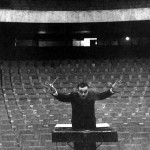
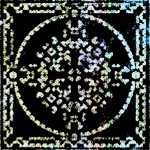
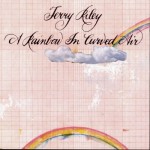
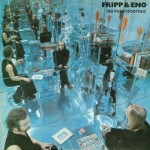
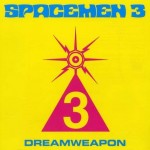
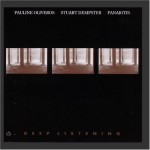
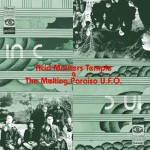
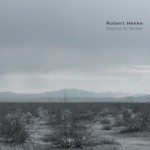
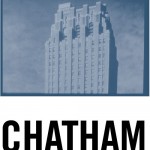
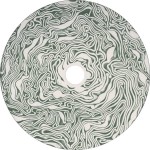

Pingback: Tweets that mention Ten: Drones | The Art Life -- Topsy.com
Pingback: Internet Art – The Art of O » Blog Archive » Yves Klein – Blue anthropometries and fire paintings
11. Stars of the Lid, Requiem for Dying Mothers
12. Taylor Duepree, May
13. Tim Hecker, Imaginary Landscape
Great list!
Thanks for that great list……that and grooveshark……i’m happy!